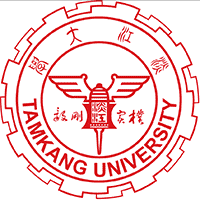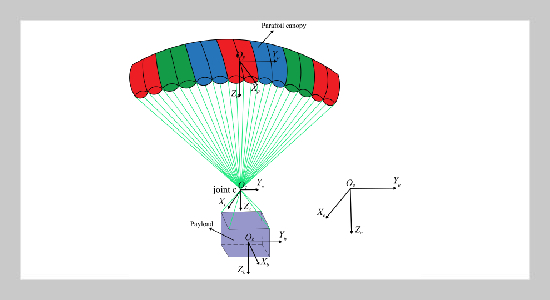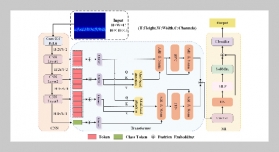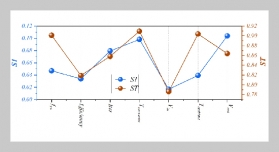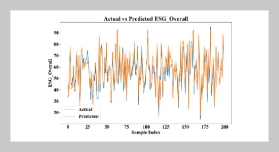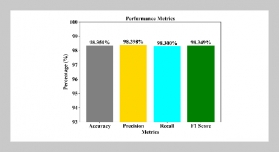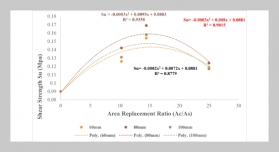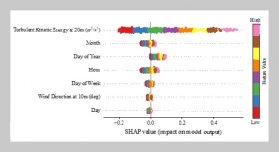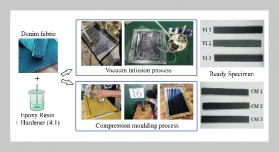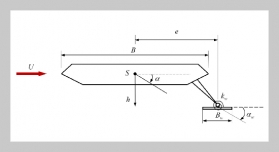- [1] H.Zhu, Q.Sun, X. Liu, J. Liu, H. Sun, W. Wu, P. Tan, and Z. Chen, (2021) “Fluid–structure interaction-based aerodynamic modeling for flight dynamics simulation of parafoil system" Nonlinear Dynamics 104(4): 3445 3466. DOI: 10.1007/s11071-021-06486-0.
- [2] Y. Li, M. Zhao, M. Yao, Q. Chen, R. Guo, T. Sun, T. Jiang, and Z. Zhao, (2020) “6-DOF Modeling and 3D Trajectory Tracking Control of a Powered Parafoil System" IEEE Access 8: 151087–151105. DOI: 10.1109/ ACCESS.2020.3016669.
- [3] Q. Sun, L. Yu, Y. Zheng, J. Tao, H. Sun, M. Sun, M. Dehmer, and Z. Chen, (2022) “Trajectory tracking control of powered parafoil system based on sliding mode control in a complex environment" Aerospace Science and Technology 122: 107406. DOI: https://doi.org/10.1016/j.ast.2022.107406.
- [4] T. Jann. “Aerodynamic model identification and GNC design for the parafoil-load system ALEX”. In: 16th AIAA Aerodynamic Decelerator Systems Technology Conference and Seminar. American Institute of Aeronautics and Astronautics (AIAA), 2001. DOI: 10.2514/ 6.2001-2015.eprint: https://arc.aiaa.org/doi/pdf/10.2514/6.2001-2015.
- [5] Z.Zhang, Z. Zhao, and Y. Fu, (2019) “Dynamics analysis and simulation of six DOF parafoil system" Cluster Computing 22(5): 12669–12680. DOI: 10.1007/s10586 018-1720-3.
- [6] N.J. Slegers, (2010) “Effects of Canopy-Payload Relative Motion on Control of Autonomous Parafoils" Journal of Guidance, Control, and Dynamics 33(1): 116–125. DOI: 10.2514/1.44564.eprint: https://doi.org/10.2514/1.44564.
- [7] E. Mooij, Q. Wijnands, and B. Schat. “9 DoF parafoil/payload simulator development and validation”. In: AIAA Modeling and Simulation Technologies Conference and Exhibit. 2003, 5459. DOI: 10.2514/6. 2003-5459.eprint: https://arc.aiaa.org/doi/pdf/10.2514/6.2003-5459.
- [8] O.Prakash and N. Ananthkrishnan. “Modeling and simulation of 9-DOF parafoil-payload system flight dynamics”. In: AIAA Atmospheric Flight Mechanics Conference and Exhibit. 2006, 6130. DOI: 10.2514/6. 2006-6130. eprint: https://arc.aiaa.org/doi/pdf/10.2514/6.2006-6130.
- [9] Y. Gang, (2015) “Nine-degree of Freedom Modeling and Flight Dynamic Analysis of Parafoil Aerial Delivery Sys tem"ProcediaEngineering99:866–872. DOI:10.1016/j.proeng.2014.12.614.
- [10] N.Slegers and M. Costello, (2005) “Model Predictive Control of A Parafoil and Payload System" Journal of Guidance, Control, and Dynamics 28(4): 816–821. DOI: 10.2514/1.12251. eprint: https://doi.org/10.2514/1.12251.
- [11] J. Tao, Q. Sun, P. Tan, Z. Chen, and Y. He, (2016) “Active disturbance rejection control (ADRC)-based autonomous homing control of powered parafoils" Nonlinear Dynamics 86(3): 1461–1476. DOI: 10.1007/s11071 016-2972-1.
- [12] J. Tao, Q. Sun, H. Sun, Z. Chen, M. Dehmer, and M. Sun, (2017) “Dynamic Modeling and Trajectory Tracking Control of Parafoil System in Wind Environments" IEEE/ASME Transactions on Mechatronics 22(6): 2736–2745. DOI: 10.1109/TMECH.2017.2766882.
- [13] Y. Zheng, J. Tao, Q. Sun, H. Sun, Z. Chen, M. Sun, and G.Xie,(2023) “Sideslip angle estimation based active disturbance rejection 3D trajectory tracking control for powered parafoil system and hardware-in-the-loop simulation verification" Aerospace Science and Technology 141: 108497. DOI: https://doi.org/10.1016/j.ast.2023.108497.
- [14] W. He, Y. Zheng, J. Wen, J. Tao, and Q. Sun, (2024) “Path Following Control of Parafoil System Based on SG LOS and Improved ADRC Tuned by MSMPA" IEEE Transactions on Circuits and Systems II: Express Briefs 71(8): 3895–3899. DOI: 10.1109/TCSII.2024.3377010.
- [15] H. Sun, Q. Sun, J. Tao, S. Luo, and Z. Chen. “A flight control system for parafoils based on improved PID control approach”. In: 2017 36th Chinese Control Conference (CCC). 2017, 1168–1173. DOI: 10.23919/ChiCC.2017.8027506.
- [16] J. Tao, M. Dehmer, G. Xie, and Q. Zhou, (2019) “A Generalized Predictive Control-Based Path Following Method for Parafoil Systems in Wind Environments" IEEE Access 7: 42586–42595. DOI: 10.1109/ACCESS.2019.2905632.
- [17] L. Zhao, W. He, F. Lv, and W. Xiaoguang, (2020) “Trajectory Tracking Control for Parafoil Systems Based on the Model-Free Adaptive Control Method" IEEE Access 8: 152620–152636. DOI: 10.1109/ACCESS.2020.3017539.
- [18] Y. P. Wang and H. R. Dong. “The Application of Adaptive PSO in PID Parameter Optimization of Unmanned Powered Parafoil”.In: Modern Technologies in Materials, Mechanics and Intelligent Systems. 1049. Advanced Materials Research. Trans Tech Publications Ltd, 2014, 1094–1097. DOI: 10.4028/www.scientific.net/AMR.1049-1050.1094.
- [19] H. Jia, Q. Sun, and Z. Chen. “Application of Single Neuron LADRC in Trajectory Tracking Control of Parafoil System”. In: Proceedings of 2018 Chinese Intel ligent Systems Conference. Ed. by Y. Jia, J. Du, and W. Zhang. Singapore: Springer Singapore, 2019, 33–42. DOI: 10.1007/978-981-13-2288-4_4.
- [20] Y.Zheng, J. Tao, Q. Sun, X. Zeng, H.Sun, M.Sun, and Z. Chen, (2023) “DDPG-based active disturbance rejection 3D path-following control for powered parafoil under wind disturbances" Nonlinear Dynamics 111(12): 11205–11221. DOI: 10.1007/s11071-023-08444-4.
- [21] Y.Zheng, J. Tao, Q. Sun, H. Sun, M. Sun, and Z. Chen. “Path following control for powered parafoil system based on TD3-LADRC”.In: 2023 42nd Chinese Control Conference (CCC). 2023, 2364–2369. DOI: 10.23919/CCC58697.2023.10240655.
- [22] Y. Zheng, J. Tao, Q. Sun, J. Yang, H. Sun, M. Sun, and Z. Chen. “Intelligent Trajectory Tracking Control of Unmanned Parafoil System Based on SAC Op timized LADRC”. In: Neural Information Processing. Ed. by B. Luo, L. Cheng, Z.-G. Wu, H. Li, and C. Li. Singapore: Springer Nature Singapore, 2024, 97–108. DOI: 10.1007/978-981-99-8073-4_8.
- [23] Z. Wei and Z. Shao. “Precision landing of autonomous parafoil system via deep reinforcement learning”. In: 2024 IEEE Aerospace Conference. IEEE. 2024, 1–10. DOI: 10.1109/AERO58975.2024.10521056.
- [24] Z. Wei, Y. Gao, Z. Shao, and C. Wang, (2024) “Dynamic-model-based closed-loop guidance and control for heavy parafoil system precision landing" Aerospace Science and Technology 146: 108964. DOI: 10.1016/j.ast.2024.108964.
- [25] J. Duan, W. Wang, L. Xiao, J. Gao, and S. E. Li, (2023) “DSAC-T: Distributional Soft Actor-Critic with Three Re f inements" arXiv preprint arXiv:2310.05858: DOI: 10. 48550/arXiv.2310.05858. arXiv: 2310.05858 [cs.LG].
